#ischigualasto formation
Explore tagged Tumblr posts
Text
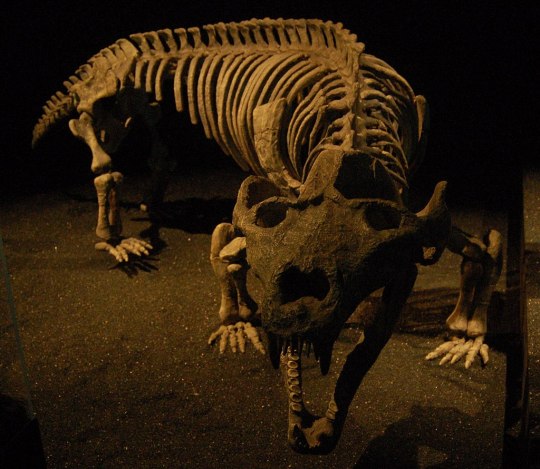
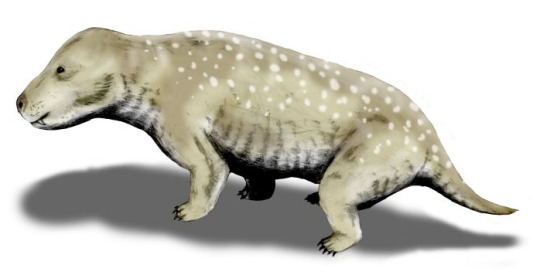

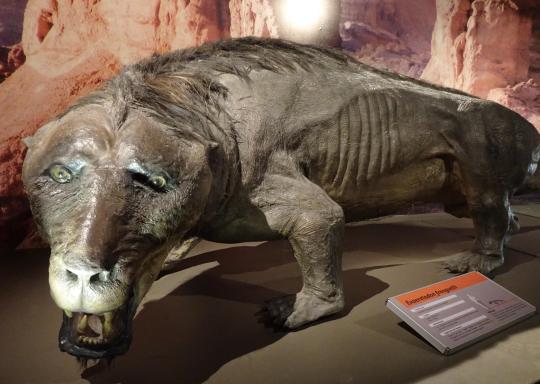
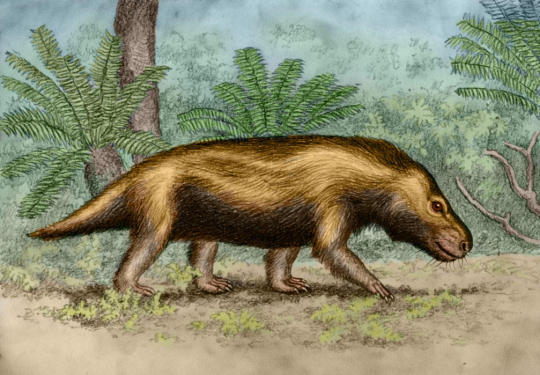
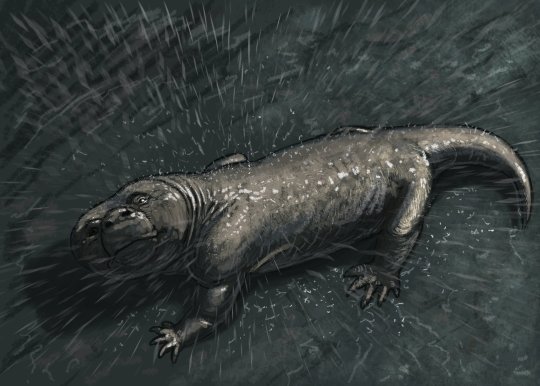
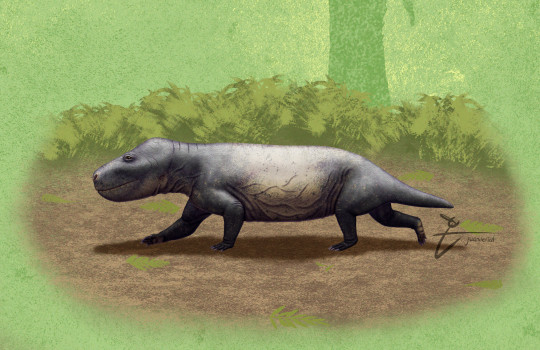
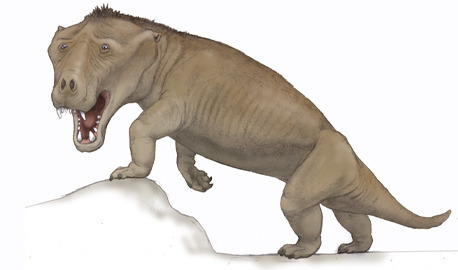
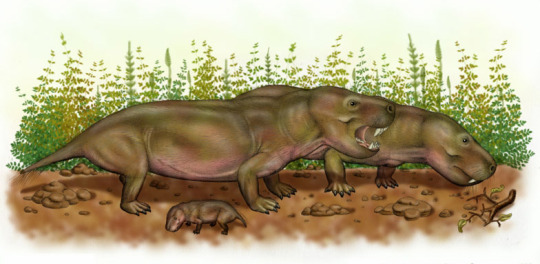
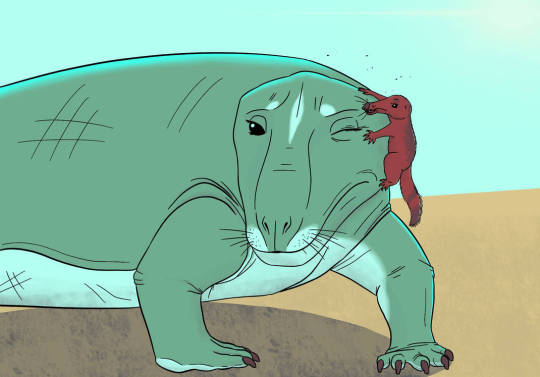
Exaeretodon is an extinct genus of traversodontid cynodont which lived throughout what is now India and South America from the Ladinian stage to the Norian stage of the Triassic period some 235 to 205 million years ago. The naming of exaeretodon seems to have a bit of a complicated history with different specimens having been attributed to various genere such as Belesodon, Traversodon, Theropsis, Ischignathus with the later two genere now considered completely synoyomous with exarertodon. For example the type specimen consisting of a near complete skull was initially described as Belesodon argentines in Ángel Cabrera until with the help of José Bonaparte, they distinquished it as its own distinct genus. Today over 200 specimens have been recovered, some in remarkably good condition including a mother who was preserved pregnant with two calves. Four species are considered valid. E. argentinus from the the Ischigualasto Formation in the Ischigualasto-Villa Unión Basin of northwestern Argentina. E. major and E. riograndensis are from the Santa Maria Formation of the Paraná Basin in southeastern Brazil. And E. statisticae is from the Lower Maleri Formation of India. Reachign some 5 to 6ft (1.5 to 1.8m) in length and 130 to 190lbs (60 to 86kgs) in weight, exaeretodon was a fairly large low-slung creature. Despite its massive jaws and terrifying appearance, studies show its teeth were well developed to grind vegetation meaning that exaeretodon was likely a grazing herbivore. And was on of the most numerous herbivores of the middle and late Triassic southern pangea.
Art used can be found at links below
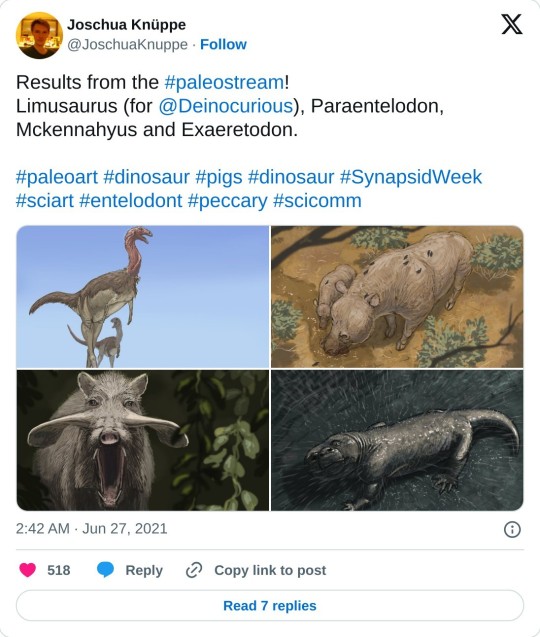
9 notes
·
View notes
Text
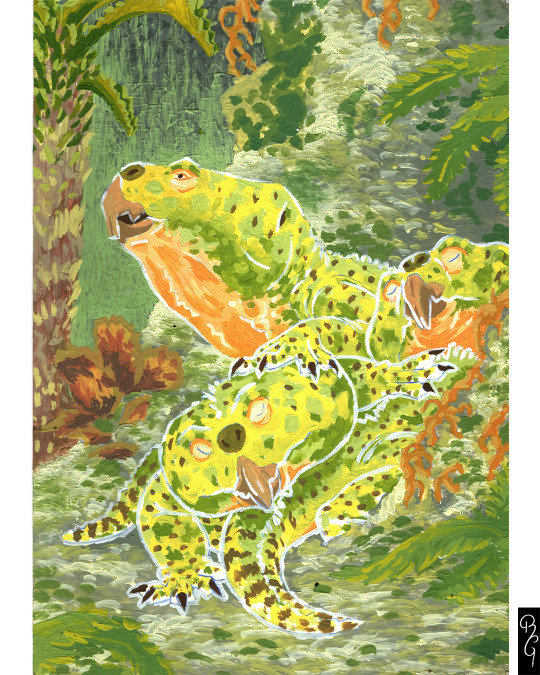
Ischigualasto series, alternate takes:
Hyperodapedon, acrylic painting, 2023}
(yes, I did this in a hurry)
#paleoart#triassic#illustration#ischigualasto formation#hyperodapedon#rhynchosauria#rhynchosaur#acrylic#acrylic painting#procastination
25 notes
·
View notes
Note
So, something like the Chinle formation or the Ischigualasto Formation for Saurian? Sold, my friend.
Yup! Either would be awesome!
7 notes
·
View notes
Text








Saurosuchus is an extinct genus of large loricatan pseudosuchian archosaurs which lived throughout what is now South America during the Late Carnian to Early Norian stages of the Triassic period around 232 to 225 mya. The first remains of Saurosuchus consisting of a complete albeit deformed skull was unearthed in 1957 from the greenish sandstone on the Cancha de Bochas Member of the Ischigualasto Formation in the Ischigualasto-Villa Unión Basin of northwestern Argentina by Galileo J. Scaglia and Leocadio Soria. This specimen was formally described in 1959 by Osvaldo. A. Reig who named the animal Saurosuchus meaning lizard crocodile in greek. The specific name, galilei, is in honour of Galileo J. Scaglia. Since then several more specimens of Saurosuchus have been recovered including some partial skeletons and a mostly complete juvenile. Reaching around 18 to 23ft (5.5 to 7m) in length and around 1,300lbs (590kgs) in weight, saurosuchus was one of the largest rauisuchians. It sported a deep, laterally compressed skull, and jaws filled with large, serrated, re-curved teeth. The neck was short but robust, the tail long and strong, with both the front and back legs being long and heavy built for walking. This quadrupedal carnivore was likely the apex predator of the Ischigualasto Formation living alongside and likely feeding upon creatures such as Hyperodapedon, Exaeretodon, Herrerasaurus, Sillosuchus, Eoraptor, Trialestes, Aetosauroides, and Ischigualastia.
Art used can be found at the following links:
#pleistocene pride#pliestocene pride#triassic#saurosuchus#ischigualasto formation#rauisuchian#crocodile#south america#mesozoic#archosaur#pseudosuchian
4 notes
·
View notes
Text








Ischigualastia is an extinct genus of large dicynodont therapsids in the family Stahleckeriidae, that lived throughout what is now South America during the Late Carnian age and the Early Norian age of the Late Triassic Period some 232 to 223 mya. The first remains of the genus consisting of a skull and partial skeleton was found in after the Ischigualasto Formation (Cancha de Bochas Member) of the Ischigualasto-Villa Unión Basin in northwestern Argentina by Doctor James Jensen. In 1962 the specimen was described by Christopher Berry Cox as an enormous dicynodont, with a short, high skull, and lacking tusks. Cox dumbed the animal Ischigualastia jenseni in reference to the Ischigualasto formation and James Jensen.Since then multiple additional skulls and partial skeletons have bee recovered. Reaching around 9 to 14ft (3 to 4m) in length and 2000 to 4000lbs (900 to 1800kgs) in weight, Ischigualastia is regarded as larger than it’s later, more famous relative Placerias and amongst the largest land animals of the triassic. It was a large quadrupedal herbivore, most common at the base of the Ischigualasto Formation. It was a common member of the local fauna, although not as abundant as the medium-sized herbivores Hyperodapedon and Exaeretodon. The only danger to such a huge animal was the almost equally large carnivorous pseudosuchian Saurosuchus and perhaps the predatory dinosaur Herrerasaurus.
Art used can be found at the following links:


#pleistocene pride#pliestocene pride#mesozoic#ischigualasto formation#ischigualastia#dicynodont#therapsid#synapsid#triassic#prehistoric#argentina
5 notes
·
View notes
Text

Ischigualasto series, alternate takes:
Pelorocephalus, color pencil, 2023
#paleoart#triassic#illustration#ischigualasto formation#pelorocephalus#chigutisauridae#temnospondyli#temnospondyl#amphibian#color pencil
26 notes
·
View notes
Text
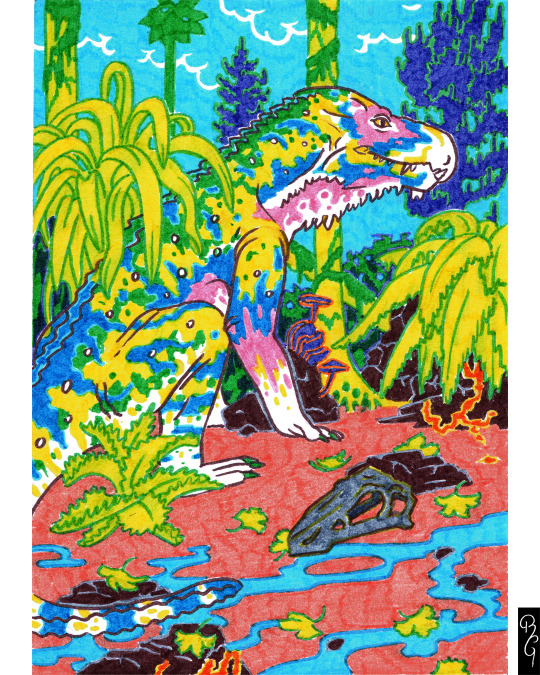
Ischigualasto series, alternate takes:
Venaticosuchus, fiber pen, 2023
#paleoart#triassic#illustration#ischigualasto formation#archosauria#pseudosuchia#ornithosuchidae#venaticosuchus#fiber pen#fiber#abstract paleoart
196 notes
·
View notes
Text
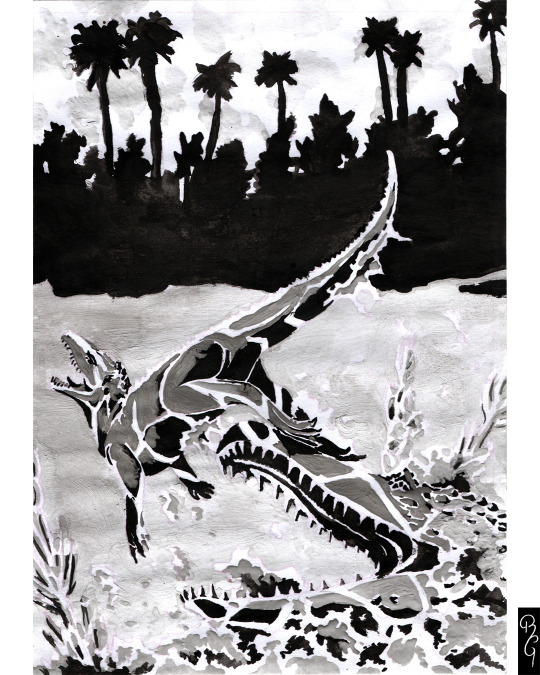
Ischigualasto series, alternate takes:
Proterochampsa chasing Trialestes, black and grey watercolor, 2023
#paleoart#triassic#illustration#ischigualasto formation#trialestes#proterochampsa#archosauriformes#crocodylomorpha#watercolor#black and grey
21 notes
·
View notes
Text

Ischigualasto series, alternate takes:
Proterochampsa chasing Trialestes, ballpoint pen, 2023
#paleoart#triassic#illustration#ischigualasto formation#trialestes#proterochampsa#archosauriformes#crocodylomorpha#ballpoint pen#ballpoint#ballpoint drawing
13 notes
·
View notes
Text

Ischigualasto series, alternate takes:
Proterochampsa chasing Trialestes, pencil, 2023
#paleoart#triassic#illustration#ischigualasto formation#proterochampsa#archosauriformes#crocodylomorpha#pencil#pencil illustration
11 notes
·
View notes
Text

Ischigualasto series, alternate takes:
Probainognathid, black and white watercolor, 2023
#paleoart#triassic#illustration#ischigualasto formation#cynodont#probainognathidae#watercolor#black and white
16 notes
·
View notes
Text

Ischigualasto series, alternate takes:
Probainognathid, ballpoint pen, 2023
#paleoart#triassic#illustration#ischigualasto formation#cynodont#probainognathidae#ballpointpen#ballpointart
22 notes
·
View notes
Text
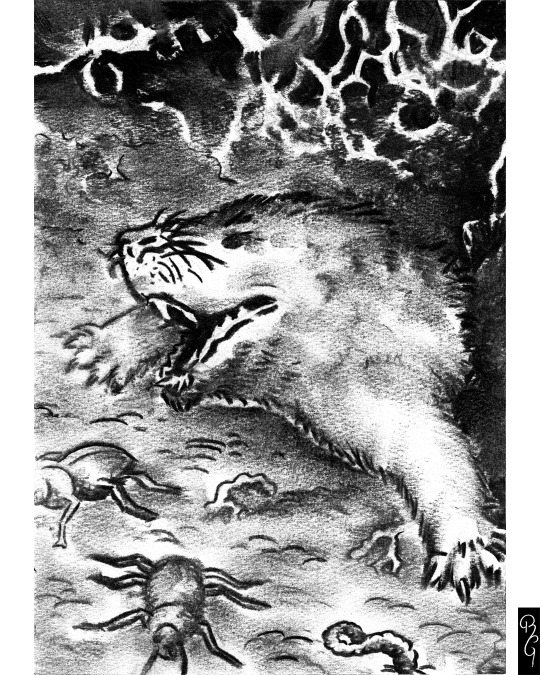
Ischigualasto series, alternate takes:
Probainognathid, carbon, 2023
8 notes
·
View notes
Text

Ischigualasto Formation Ink Illustration Series #6:
chigutisaurid Pelorocephalus swimming around.
#paleoart#triassic#illustration#ischigualasto formation#ink#ink illustration#pelorocephalus#chigutisauridae#temnospondyli
22 notes
·
View notes
Text

Ischigualasto Formation Ink Illustration Series #5:
A paradoxical scene where a subadult Trialestes, an early crocodylomorph, is being ambushed by Proterochampsa, an archosauromorph that occupied a similar niche of today's crocodilians.
#paleoart#triassic#illustration#ischigualasto formation#ink illustration#ink#trialestes#proterochampsa#pseudosuchia#crocodylomorpha#proterochampsidae
17 notes
·
View notes
Text

Ischigualasto Formation Ink Illustration Series #4:
A female Venaticosuchus watching a part of her territory, she felt hearing something. Beside her, a Sillosuchus skull.
#paleoart#triassic#illustration#ischigualasto formation#ink#ink illustration#venaticosuchus#ornithosuchidae#pseudosuchia
10 notes
·
View notes